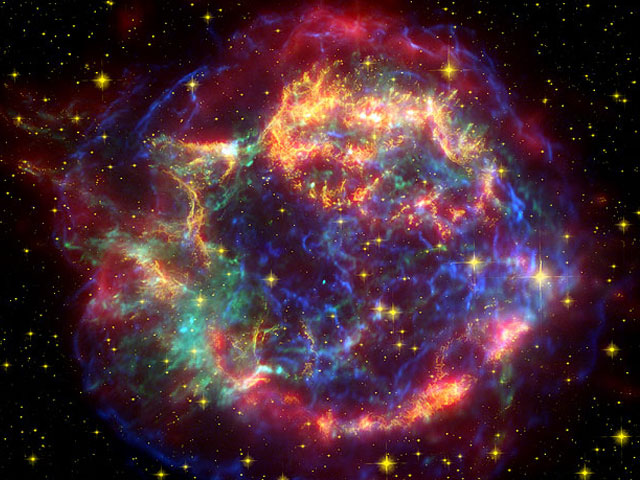Cassiopeia A Light Echoes in Infrared

Explanation:
Why is the image of Cassiopeia A changing?
Two images of the nearby
supernova remnant taken a year apart in
infrared light
appear to show outward motions at tremendous speeds.
This was unexpected since the
supernova
that created the
picturesque nebula was seen 325 years ago.
The reason is likely
light echoes.
Light from the supernova heated up distant ambient
dust that is just beginning to show its glow.
As time goes by, more distant dust
lights up,
giving the appearance of outward motion.
The
above image is a composite of
X-ray,
optical, and infrared light exposures that have been digitally combined.
The
infrared light image was taken by the orbiting
Spitzer
Space Telescope and was used in the discovery of the light echo.
Cassiopeia A
spans about 125
light years and lies 10,000 light years away toward the
constellation of
Cassiopeia.
Authors & editors:
Robert Nemiroff
(MTU) &
Jerry Bonnell
(USRA)
NASA Web Site Statements, Warnings,
and Disclaimers
NASA Official: Jay Norris.
Specific
rights apply.
A service of:
LHEA at
NASA /
GSFC
& Michigan Tech. U.

